St. John's wort is a herbian medicinal plant, which belongs to the numerous kind of hunting. In total, there are more than 300 species of the Hypericum, among which shrubs, half-workers, perennial and annual herbaceous plants are found. In the natural habitat, Zver worthes everywhere: in mountainous regions, tropics, deciduous forests, meadows. St. John's wort is more known as an excellent honeycomb and a medicinal plant that has unique healing properties and is used in traditional medicine.
Among the variety of species, decorative shrub varieties are highlighted with large attractive flowers of golden shades, which are used by gardeners for decorating household plots and have special decorativeness. Bright lush bushes stand out on a juicy green background, used as a living hedge. To decorate the flower and collecting medicinal raw materials, dachas are planted with medicinal trees of grassy plant. On how to grow by St. John's wort on the summer site, read further.
Variousness of the Hypericum - Description
Among the many different types of Hypericum, the following types of medicinal plants are most common, each of which has its own unique appearance.
- St. John's wort Olympic. The natural habitat of the plant is the southern part of Europe, Malaya Asia, the Mediterranean. Prefers a warm and temperate climate. It has a semi-stamped form. In height reaches no more than 3 5 cm, in diameter up to 25 cm. The leaves are green, with a naizlah, have the form of oval. Flowers large bright yellow flowers over July-August. Unpretentious culture, long time grows in one place, not requiring a transplant.
- St. John's wort (ordinary) - Medicine grass plant with strong root system. In natural conditions, grows throughout. The height of the bush reaches up to 80 cm. At the beginning of the growth of cylindrical plants, the plants are painted in a green shade, as it takes a dark red or brown shade. The leaves are oblong, oval shape, up to 3 cm long with numerous light veins, which creates the effect of "crooked", from here and the unusual name of this species. Flowers are small, up to 2 cm in diameter, collected in a panicle, petals painted in yellow. Plant blooms throughout the summer.
- St. John's wort - Perennial grassy culture. Habitat - Northern Africa, Small Asia. A bush reaches a height of up to 1 meter, has a creeping root system. Sided soft, cylindrical, leaves - oval, green with light blue tint. Flowers - yellow, collected in a panicle. The flowering period is July, August, the fruits are formed in September.
- Drying - Decorative bush up to 1 meter high, is often used in the creation of landscaped compositions in the neighborhood with other perennials. This species is distributed in Europe, in the Caucasus. The brown plants stalks and pointed leaves of the SIZOCY are possessed with special decorativeness. Flowers are collected in umbrellas, painted in a yellow shade, in diameter up to 4 cm.
- St. John's wig - Outwardly, the plant resembles a trouser blessing. The main difference of the species is the longitudinal sharp ribs on the stem. Growing area - Europe and Asia. Flowers with yellow petals, sometimes there are black dots on them. The plant contains toxic substances and is not used for medical purposes.
- St. John's wort - a reprehensive perennial, reaching the height of up to 70 cm. Flowers small, golden shades, are collected in inflorescence. The plant has a unique chemical composition, used in folk medicine.
- St. John's wig - Annestly soil plant with branched stems and small leaves. Flowers are small, with yellow petals, blooming all summer.
- Zver worthes - High plant with a reprehensive stem. Floor leaves, large flowers. May be solitary or collected in inflorescence up to 5 pieces. The period of flowering plants is non-dust, from June to July.
- John's whirlpool. Evergreen shrub with leathery leaves oblong shape. Right plant with Transcaucasia and Mediterranean. Flowers are large, lemon color with multiple stamens.
St. John's wort - therapeutic properties
For harvesting raw materials, stems, leaves and inflorescences of the Hypericum, which contain a large number of valuable vitamins, tanning substances, essential oils, phytoncides and flavonoids. St. John's wort is part of the healing drugs used both in folk and traditional medicine and helps to fight a little bit.
- The plant has knitting and hemostatic properties. Quickly heals the wounds, relieves pain.
- Hormick-based decades redemmed the nervous system, possess antidepressant properties, strengthens the body. Used in the treatment and disinfection of the oral cavity, eliminating the unpleasant odor.
- In the external use, a row with a beast, which quickly heal wounds, abrasions, bruises, naryvy.
- Hypericum oil effectively with strong burns and purulent inflammation of the skin.
- Zver wonderfully activates the work of the heart, strengthens the vessels and capillaries.
- Used in diseases of the gastrointestinal tract, normalizes the metabolism, has a choleretic effect.
Planting a hunter in an open soil
St. John's wort is an unpretentious culture that can grow without much care. The cultivation of the Hypericum in the open soil will not be difficult even for a novice.
Place of landing of the Hypericum and the choice of soil
You can plant a plant in any suitable garden plot: on a flowerbed, along the fence, near the house or veranda. Shrune species can serve as an excellent alive hedge, and medicinal herbaceous species will be appropriate in flower bed. John's wort is preferred solar, well-lit territories, but those covered by the gust of wind and draft. The soil under the landing of the Hypericum should be chosen a fertilous, loose. To enrich the ground, it is enough to make an organic fertilizer (4-5 kg \u200b\u200bof pumping on M.KV) or compost (2-3 kg per mq.). It is undesirable to choose to land clay, alumina, too acidic or alkaline soils.
Sowing Seeds of the Jeveroyforward
Like all therapeutic herbs, St. John's wort is seed. Sowing time seeds - November or early spring. When planting in the spring, the seeds must undergo stratification (hardening with cold). For this, the seeds are placed in moistened sand and placed on 6-8 weeks in the refrigerator. In the fall, use dry sowing material or fresh seeds collected from the plants. It is worth remembering that when planting seeds in spring, the plant develops slower, and if spring is arid, seedlings may not climb.
Stages of planting seeds of the Zverca
- Plot for the cultivation of the medicinal plant should be prepared in advance. If autumn landing is planned, the ground is prepared in the summer, if in the spring - in the fall. The site should be switched, to block the top layer of soil with robbles and make an organic fertilizer or compost.
- Seeds are sowing superficially, not closeing them into the ground, observing the distance between the rows of 40-45 cm. From above, they are sprinkled with a small layer of earth or sand and water.
- With a spring landing, a row with seeds are covered with a film.
How to plant a shrub hunt
For the breeding of shrub decorative forms of the Hypericum is used by landing with cuttings, which can be purchased in specialized outlets or prepare on their own, using an adult shrub of the Hypericum. After 2 weeks, the stalks, supplied in the water, gives root.
The cuttings are planted in the spring in an open ground into a shallow landing pit, filled with a drainage layer (clay, pebbles, battle) and humus. The roots of the hormour of the bush should not be deeply shuffled, it is enough to pull out its ground, to compact and pour well.
Purchase care in open soil
It is easy to care for the plant, special attention should be paid to young shoots after planting seeds.
- Watering is needed moderate, not allowing moisture stagnation in the soil. With rainy summer in the watering of the Hypericum there is no need.
- Undercalinking from the Hypericum in the open ground lies in the fertilizer of the nitroammophos in the granules (8 grams on M.KV) in early spring, before the flowering of the plant.
- An important stage for the care of the plant is a weeding and removal of weeds around the landing, which can slow down the growth of the Hypericum. To loosen the soil with extreme caution so as not to damage the root.
- In winter shelter, Zver waders do not need, in conditions of harsh climate in the northern regions, it is recommended to cover the shrub shape of a sweetheart, dry leaves. If after winter, frozen branches or stems are detected, they must be removed.
Preparation of medicinal raw materials from the Hypericum
The magnificent bloom of the Hypericum should be expected only for 2-3 years after planting the plant. During the flowering of the Hypericum, you can proceed to the preparation of medicinal raw materials (June, July). For this procedure, you should choose solar, dry weather. Top shoots of the plant are cut at a distance of 25-30 cm using a secateur or knife. The shoots are dried in a huge and ventilated room, regularly turning the grass. When the shoots are dry and become brittle, they are placed in glass jars, boxes or paper bags and stored in a dry room for 3 years.
The reproduction of the Hypericum in the open soil
The main method of breeding the medicinal plant - seeds in the fall or early spring immediately in open ground. In addition, a green shilling method is used in the spring period in the time of vegetative plant growth. Cropped green escape is placed in warm water and are waiting for the appearance of the roots. Then the cuttings root into the ground and leave in the greenhouse. In the spring, the rooted stalk is ready for landing at a permanent place.
Diseases and pests of the Zverkoy
Most of the views of the Hypericum are steadily to many diseases and pests. However, non-compliance with the optimal conditions for growing plants may cause such diseases as:
- Rust. The disease that slows down the growth of the plant. The leaves are covered with yellowish and rusty spots. Fungicides are used to combat the disease, the affected leaves should be removed and destroyed.
- On a rainy summer or with abundant watering of bushes possible muced dew - fungal disease, which is characterized by a white bloom on the leaves and plant stems. Fungicides are used to combat the disease.
Among the insects of pests can be distinguished by a leaflet - a caterpillar, which worst the web for the foliage of the Hypericum and a hunting mole that affects the top of the plant. Insecticidal preparations are used to combat pests.
Stock Foto Zverkoy in open soil
The cultivation of the Hypericum in the country area is a simple and exciting occupation. In addition to the beautiful decorative properties of the plant, St. John's wort is a healing culture that allows you to collect valuable medicinal material for the treatment of many ailments.

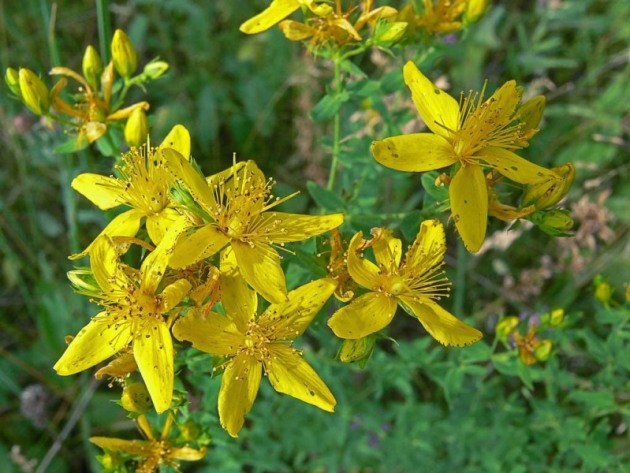

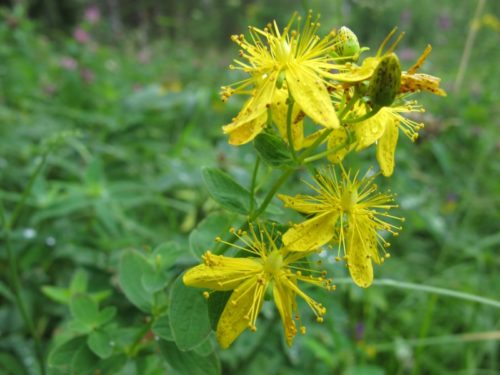

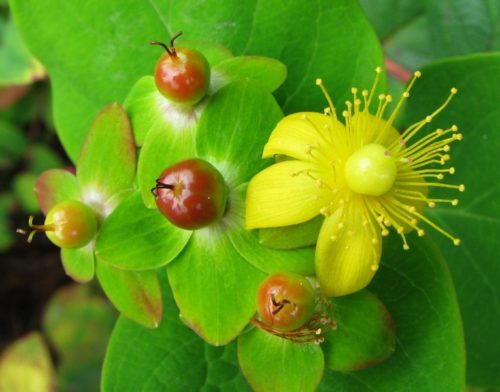
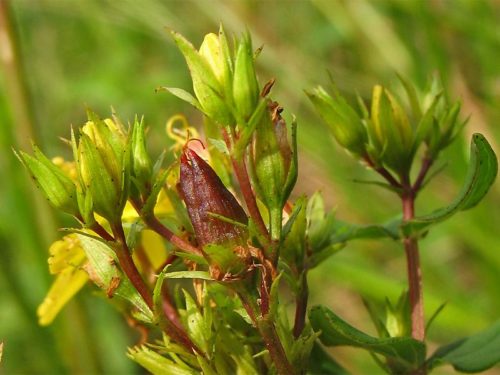
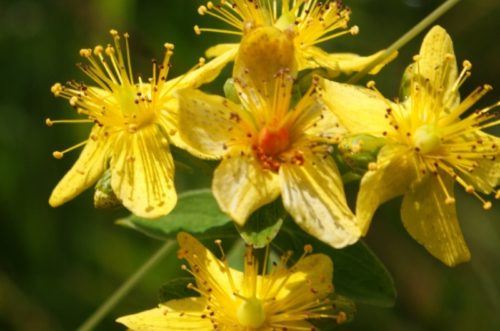
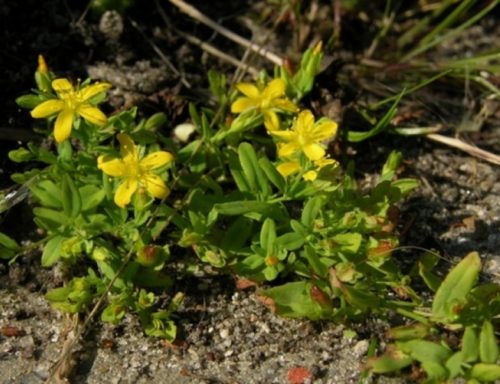
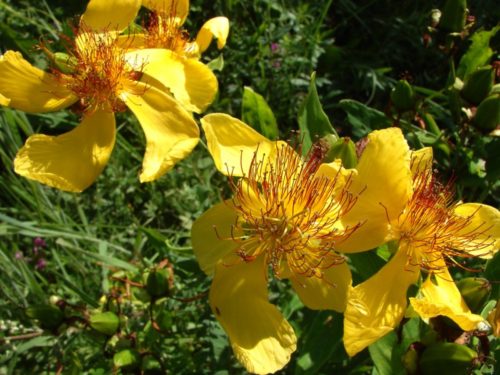
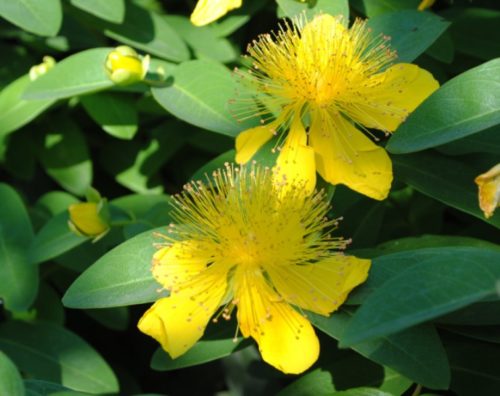
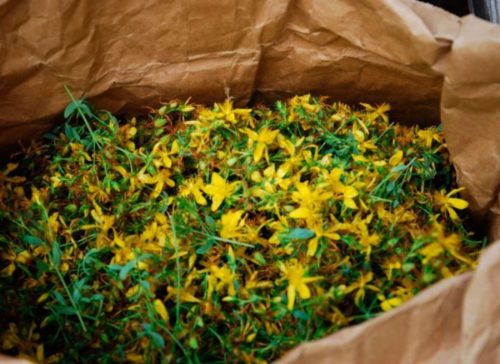
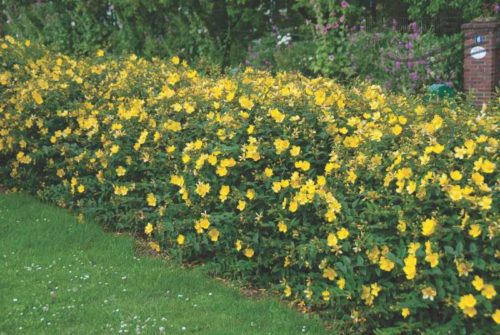
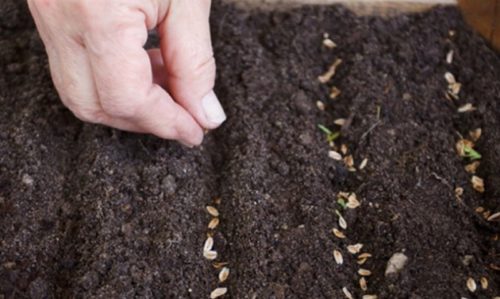
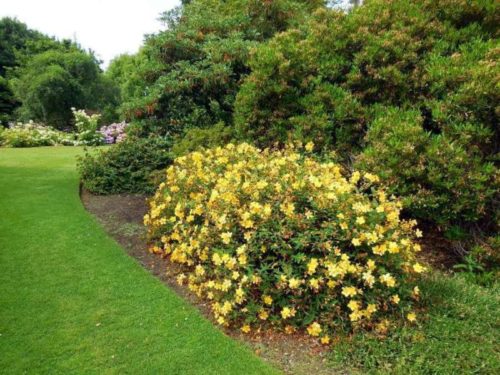
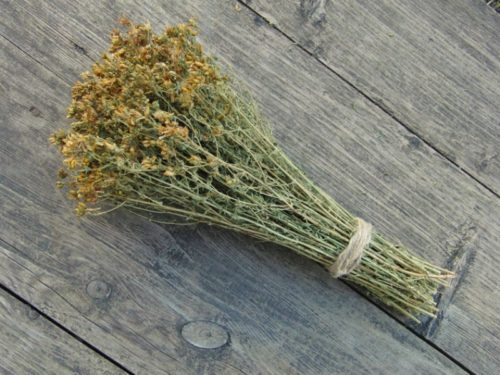
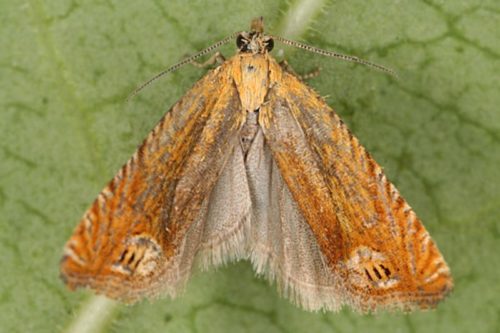
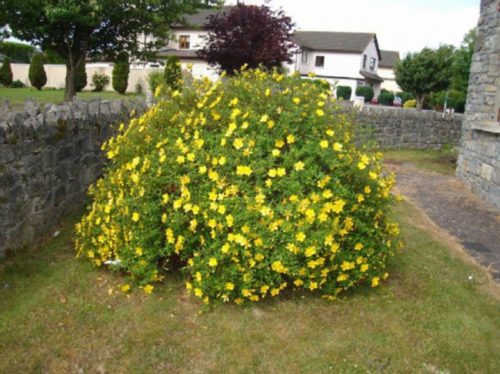

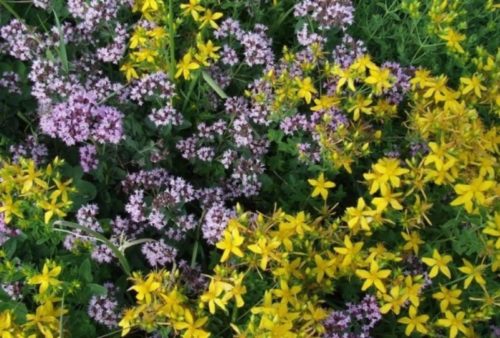
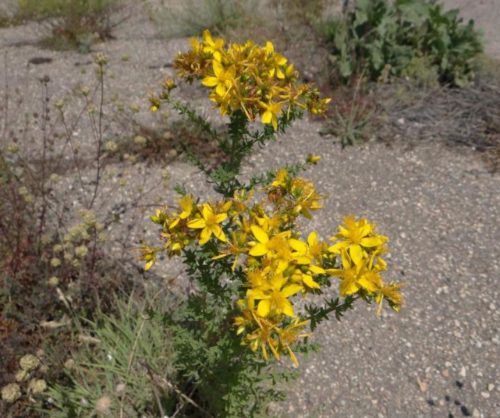
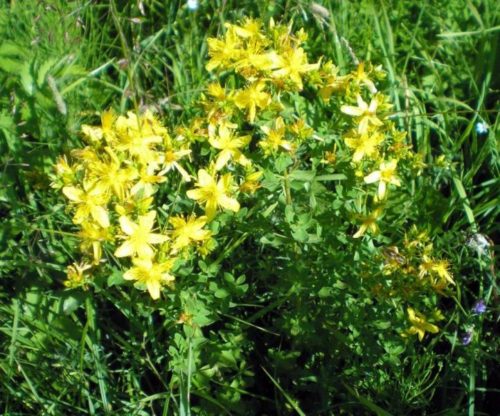












 Start a discussion ...
Start a discussion ...